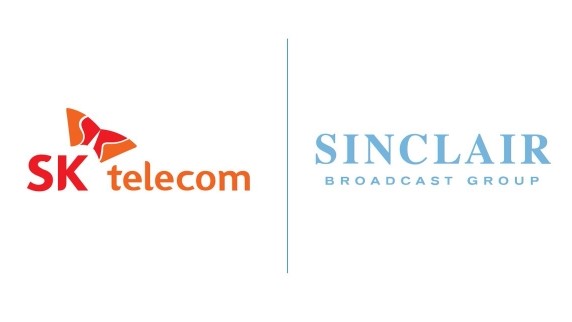CAST.ERA Eyes Year-End Release of 5G-ATSC 3.0 Convergence Technologies
Some capabilities include an AI-based upscaler, zero-latency OTT and personalized ad delivery

JEJU ISLAND, South Korea & ARLINGTON, Va.—CAST.ERA, a joint venture of SK Telecom and Sinclair Broadcast Group, says it will introduce a technology package by year’s end that converges 5G and ATSC 3.0 to broadcast Ultra-HD (UHD) video with little to no latency to NextGen TVs and mobile devices and support personalized ad delivery for each viewer during commercial breaks via OTT.
“We plan to introduce the cloud-based, AI-driven next-generation TV broadcasting solutions into the U.S. market this year,” said CAST.ERA COO Kevin Gage. “These solutions will help accelerate U.S. broadcasters’ deployment of next-generation TV broadcasting services into the market.”
The new technologies also will enable OTA datacasting and live TV broadcast via OTT to home viewers and those on the go with minimal lag in transmission time. The announcement comes following successful trials of CAST.ERA’s technology on Jeju Island, South Korea, the company said.
The converged 5G-ATSC 3.0 technologies include:
- AI Upscaler, which creates high-quality broadcast video in real-time, upscaling broadcast resolution, increasing frame rate and expanding color gamut via artificial intelligence.
- Virtualized Broadcasting Platform, which uses cloud and mobile edge computing to operate and remotely control broadcasters’ local transmission systems from a centralized location and enable more efficient and economical operations.
- Zero-Latency OTT, which cuts OTT streaming delay to TVs and mobile devices from nine seconds to zero. The technology also dynamically inserts personalized ads for each OTT viewer during commercial breaks.
- Datacasting, which makes it possible to distribute large amounts of data via TV broadcast signals.
“Bringing together the technologies and expertise that these two companies possess will help unlock the huge potential that ATSC 3.0 has for delivering IP content efficiently over large geographic areas covered by our TV signal,” said Sinclair CTO Del Parks. “These technologies are a game changer. Our new abilities to provide improved viewer experience and access to new business models, like data delivery as a service (Ddaas), is one of the most exciting things to happen to our business since HDTV.”
The new technologies were trialed at Jeju Technopark in a 5G-ATSC 3.0 testbed. The trials began with a transmission from Las Vegas to Jeju Island.
They were conducted in collaboration with South Korea’s Ministry of Science and ICT, Korea Communications Commission (KCC), Korea Radio Promotion Association (RAPA), Electronics and Telecommunications Research Institute (ETRI), Jeju Special Self-Governing Province, Korean broadcasters, and select partner companies, the company said.
Get the TV Tech Newsletter
The professional video industry's #1 source for news, trends and product and tech information. Sign up below.
During the trials, CAST.ERA worked with Doosan and MBC to demonstrate a location service that carries GPS correction data (MBC RTK) via a 3.0 broadcast signal to a Doosan hydrogen fuel cell drone. The correction data reduces GPS positioning errors from 3 to 6 feet to 4 inches, the company said.
CAST.ERA will provide broadcast solutions to the United States and Korea, working with Sinclair and other U.S. broadcasters and Korea’s Kai Media, ATBiS, DigiCAP and Hasigancom. SK Telecom is Korea’s largest mobile telecommunications provider and a pioneer in 5G smartphone service.
Phil Kurz is a contributing editor to TV Tech. He has written about TV and video technology for more than 30 years and served as editor of three leading industry magazines. He earned a Bachelor of Journalism and a Master’s Degree in Journalism from the University of Missouri-Columbia School of Journalism.

